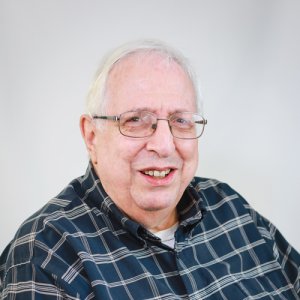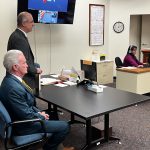STONE HARBOR – The Stone Harbor Property Owners Association (SHPOA) offered to buy equipment and supply volunteers to engage in GPS-based monitoring of sand movement off borough beaches. It was to be the organization’s project of the year. That project is now dead.
SHPOA said the organization has been informed that the borough does not intend to use the GPS system or its data for beach management efforts, “with the result that our offer to purchase the equipment was no longer relevant.”
That was not the case just a short time ago. At the Borough Council meeting, June 20, the council heard from its coastal consultant, Douglas Gaffney, of Mott MacDonald, about the many ways in which using a GPS system to measure sand movement on beaches in the interval between official surveys “fits into the narrative” of improved beach management.
The narrative referenced was the development of plans for potential changes to the beach environment that might help retain sand on the fast-eroding beachfront between regular federally sponsored beach replenishments. Gaffney was joined by SHPOA’s Geoff Woolery, June 20, as both men spoke of the perceived value of doing the volunteer-staffed GPS-based measurements.
Gaffney argued that the project would help in discussions with the state Department of Environmental Protection (DEP) even though it was not the professional level of survey data required for permit applications. He argued that the data would be useful supplementary information of the numerical model that Mott MacDonald developed as part of the council-authorized feasibility study.
Gaffney added that the data would better support benefit-to-cost ratios, as the borough evaluated options for maintenance to the beaches that go beyond normal activity at the crossovers.
Gaffney even added that the project would provide Community Rating System (CRS) points. That comment came as the borough scrambles to identify every available opportunity for CRS points in its effort to regain a CRS level 5 status.
Woolery said SHPOA would cover the bulk, if not all, of the cost for the purchase of the equipment and the annual software licenses for 2023. After that, the cost of the license renewals would be about $2,800 a year and that would be a borough expense. Woolery remarked that if the project did end up not adding the level of value expected, “The investment would be pretty small to have given this a try.”
There was no disagreement voiced from the council at the June 20 meeting. It appeared the project would proceed.
Fast forward to the council meeting, July 18, and any consensus on the project evaporated. Council members Bunny Parzych and Robin Casper were for moving forward. The most vocal opposition came from Council member Frank Dallahan.
There was a debate over the value of the data. Gaffney had enumerated the areas where he felt the data would be useful at the earlier meeting in June. In July, Administrator Manny Parada, himself an engineer, argued that the data could not be used effectively and even went so far as to say that attempts to use the data would be a violation of a code of ethics that bound engineers.
Borough Engineer Marc DeBlasio said the data could be used as supplemental material. DeBlasio did not reply to Parada’s issue of a violation of ethics.
That meeting ended with a proposal by Mayor Judith Davies-Dunhour to have Gaffney attend the next meeting and respond to various concerns before the council got to the point of voting on the SHPOA proposal.
Another issue at the July meeting called into question the continued use of Gaffney as a consultant. Public comments by Dallahan that Gaffney was late with the submission of his feasibility study, that Gaffney had taken it upon himself to show his work to the U.S. Army Corps of Engineers and the DEP before presenting the final report to council, and that he, Dallahan, had doubts about whether Stone Harbor should continue its relationship with Gaffney.
The remarks concerning Gaffney sharing information with the Army Corps and DEP came even though, on at least two occasions, Gaffney reported to council that he had met with the two agencies to discuss the numerical model.
Parada’s remarks had one clear result. Woolery said he was in the process of extending into a new, three-year term as SHPOA’s sustainability committee chair. He changed course and will be stepping down from the SHPOA post. Parada’s choice of words may have been more damaging than his intent.
Woolery said, “With the beach effort that Doug (Gaffney) and I were championing being referred to as ‘unethical’ by Parada, I informed SHPOA that I saw no path forward in my current role.”
Noting that sustainability efforts require direct and frequent interaction with the Public Works director and the administrator, “who, in this case, are the same person,” Woolery said he saw barriers to working as the sustainability committee chair.
The following council meeting where the discussion with Gaffney was planned, Gaffney was not present. No explanation was given for his absence or the change of plans. The agenda included no discussion of the GPS project.
Toward the end of the meeting, Council member Robin Casper did provide some information for the public. She said the feasibility study was received by the borough July 28 and it had been distributed to all members of council.
She also said it was completed within the parameters of the budget authorized for the study. It was Casper who said SHPOA had withdrawn support for the GPS project, meaning it was effectively dead.
When asked, SHPOA did say through a spokesperson that it “stands ready to assist the borough in the beach management efforts,” presumably in other ways.
Contact the author, Vince Conti, at vconti@cmcherald.com.








